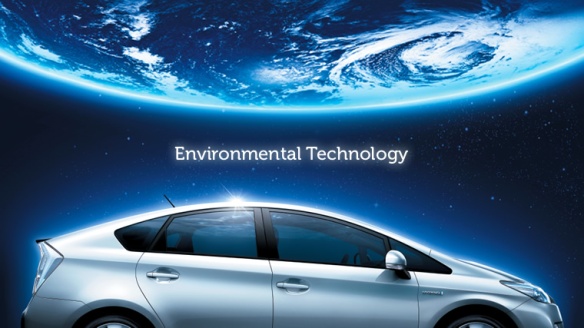
On Monday 24 September, what was ostensibly the press preview for the (very limited) production version of the battery electric variant of the Toyota iQ soon became, in the words of Bertel Schmitt of The Truth About Cars, “the strangest product launch I have ever seen”. Given how much information the usually reticent Toyota revealed regarding its future powertrain plans, press coverage was equally strange, veering between overly simplistic and sensationalist sound bites. Toyota to Launch 21 New Hybrids and a New Fuel Cell Vehicle in the Next Three Years! Toyota drops plan for widespread sales of electric car! Toyota kills electric car plans, says ‘capabilities of electric vehicles do not meet society’s needs’! Ultimately, only a trio of accounts of what transpired at the Universal Design Showcase of Tokyo’s MegaWeb are truly worth reading: the aforementioned Bertel Schmitt of The Truth About Cars‘ “you-are-there” report, Hans Greimel’s Automotive News/Autoweek story for its large number of exclusive tidbits of information and, if you’re really pressed for time, Jake Holmes of Motor Trend‘s summary of the full TMC Announces Status of Its Environmental Technology Development, Future Plans Toyota Global newsroom PDF document. If, however, you prefer deep-dive analysis, commentary, interpretation and informed speculation of the sort Kaizen Factor thrives on, stay with us as we deconstruct Toyota’s newest revelations.
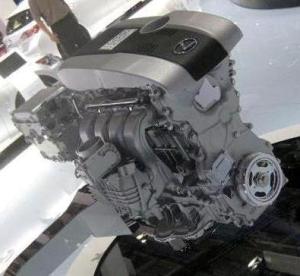 A new 2AR-FXE with D-4S engine variant
A new 2AR-FXE with D-4S engine variant
The “enhanced engine for use in hybrid vehicles, based on the 2.5-liter AR gasoline engine, (adopting) the Atkinson cycle and D-4S system” is none other than a new D-4S (dual direct+port injection) variant of the 2AR-FXE 2.5-liter 4-cylinder Atkinson cycle hybrid engine used on the current Toyota Camry Hybrid and Lexus ES 300h. The existence of this engine was actually revealed a week earlier, in a Lexus USA Newsroom press release for the Lexus LF-CC concept. In a story for the my.IS website, yours truly figured that it would produce something in the vicinity of 220-225 total system horsepower (versus 200 total system horsepower for the port injection-only 2AR-FXE). Toyota’s Environmental Technology Development news release adds a couple of new bits of information. For one, the 2AR-FXE with D-4S achieves the world’s highest maximum thermal efficiency (38.5%), which translates into the engine producing more power and using less fuel, while wasting less heat.
Hans Greimel also informs us that this iteration of the 2AR-FXE engine will receive Denso’s newly-tweaked D-4S injectors that already appear in the 4th-generation Lexus GS and Scion FR-S/Toyota GT 86. In comparison to the original D-4S injectors that date back to 2006, the new ones use a slit-shaped (as opposed to the previous multihole) injector opening. This creates a richer fuel mixture inside the cylinder and results in 1% better fuel economy.
Toyota reveals that this engine will go on sale sometime during calendar year 2013 in an undisclosed vehicle. Greimel, however, suggests that the Japanese domestic market’s Toyota Crown Hybrid will be the first recipient of the new powerplant. Makes sense, as this would allow for some closer-to-home experience before exporting it in the Crown’s platform-mates, the rumored (and trademarked) Lexus GS 300h and IS 300h versions of the 4th-gen GS and 3rd-gen IS, respectively. Given current rumors that the IS 300h, like the outgoing IS 200d and IS 220d, will only be sold in Europe, expect a debut for the Lexus variants at either the 2013 Geneva Motor Show (press previews on Tuesday 5 and Wednesday 6 March) or, later in the year, at the Frankfurt Motor Show (press previews on Tuesday 10 and Wednesday 11 September).
Beyond its initial applications in Toyota’s new rear-wheel-drive N-platform (launched with the 4th-generation Lexus GS and expected to spread to the upcoming 3rd-generation Lexus IS and 14th-generation [S210 or S220] Toyota Crown), will the 2AR-FXE with D-4S hybrid powertrain eventually migrate to the myriad front-wheel-drive K-platform Toyota Camry derivatives that use the AR 4-cylinder engines? Could be…
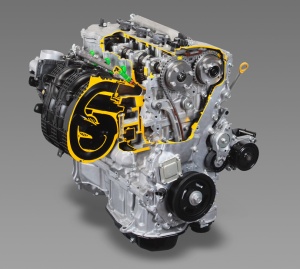 A turbocharged 3AR-FTE or (better yet) 3AR-GTE?!
A turbocharged 3AR-FTE or (better yet) 3AR-GTE?!
In what is perhaps the biggest surprise of the Environmental Technology Development announcement, Toyota informs us that
Starting 2014, TMC plans to launch a vehicle with a new 2.0-liter, turbo-charged AR engine, also based on the 2.5-liter AR gasoline engine. The new engine’s smaller displacement will provide higher fuel efficiency while the turbocharger will improve output.
In other words, Toyota is meeting the challenge laid down by Volkswagen, General Motors, Ford and Chrysler/Fiat, among others, in going the smaller displacement with a turbo route, all the better to “game” the U.S. EPA fuel economy cycle (and its European and Japanese counterparts) into producing lower consumption numbers realistically achievable only if you drive 24/7 like Grandma on a day she forgot to eat her breakfast. Step on it, spool the turbo up to full boost, and you’ll use more gas than in the naturally-aspirated 2.5, but I digress…
As we noted back in December 2011,
When looking back at Toyota’s boosted gasoline powerplants, the company’s history is akin to Audi’s, with a mix of turbocharging (Supra, 2nd-generation MR2, Toyota Celica All-Trac Turbo/GT-Four) and supercharging (1st-generation MR2, TRD aftermarket kits and Australia’s Aurion TRD). The new millennium, however, has seen nothing but superchargers.
Thus, it’s a 180 degree, back-to-the-future turn for Toyota to turbocharge, as opposed to supercharging, its AR 4-cylinder engine.
Deducing what engine code the new 2-liter AR turbo will use is a fairly straightforward matter. As is the case for Toyota and Lexus’ GR V6 engine family, the smaller the first number, the larger the engine displacement, and vice-versa. The 1AR-FE is a 2.7-liter 4-cylinder engine that debuted in Toyota’s current Venza and Highlander, made a brief appearance in the current Sienna minivan and is also available in the Asian-market Lexus RX 270. The 2AR-FE is its smaller 2.5-liter variant (shown above left) that is available in Toyota’s RAV4 and Camry, the Scion tC coupe and the new throwback-badged Lexus ES 250 for the Chinese market. The 2AR-FXE, of course, is the hybrid version we discussed earlier. Thus, a 2-liter version will be a 3AR. The “F”, per Wikipedia, denotes an economy narrow-angle valve DOHC (dual overhead camshaft) head, while a “G” would make it a performance wide-angle valve DOHC. A “T” for turbo is, of course, obligatory, as is the final “E” for electronic fuel injection. Thus, it would be a 3AR-FTE if it’s more economy-oriented or a 3AR-GTE if it’s performance-oriented. Sure, we definitely prefer the latter, but should also note Toyota GT 86 chief engineer Tetsuya Tada’s thoughts on boost (again from our December 2011 article):
Tada-san favours the supercharger approach because it is simpler to achieve than increasing engine size and doesn’t wreck throttle response as turbocharging might. Indeed Toyota says that turbocharging along with four-wheel drive and wide tyres are what make sports cars boring to drive.
In other words, we suspect a more economy-oriented 3AR-FTE is likelier. As to what 2014 vehicle gets the honors of launching this engine, it’s anybody’s guess, but this author suspects some sort of obscure, low-production variant of the Corolla for the Japanese domestic market. I know our co-editor Flipside909 is rooting for it to power a Volkswagen GTI-rivaling son-of-Corolla FX16 GT-S. Or, perhaps, a non-hybrid Lexus CT 200t sporty hatchback with a proper manual transmission?
Another compelling question is whether or not the so-called 3AR-FTE will use D-4S dual direct+port injection. We suspect not, given the historical issues with aftermarket boost for Toyota’s GR-FSE V6s and how Subaru went direct injection-only when turbocharging the FA20 flat 4.
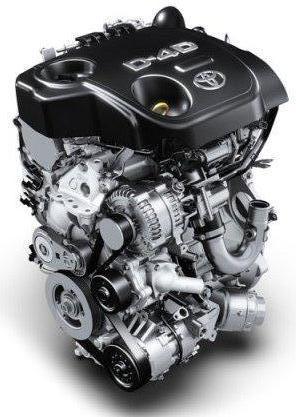 Toyota’s small ND diesel gets a reprieve for Europe
Toyota’s small ND diesel gets a reprieve for Europe
In our first article on the BMW/Toyota alliance, we figured that Toyota wouldn’t bother to reengineer its aging diesel engines to meet upcoming Euro 6 standards. It turns out we were wrong, at least insofar as the smallest of them all, the 1.4-liter 1ND-TV. As the carmaker informs us,
The adoption of newly developed exhaust gas cleaning technology enabled the engine to pass the Euro 6, one of the most stringent exhaust emission standards in the world. Vehicles equipped with the new diesel engine are planned for launch starting 2015.
Thus, expect the 1ND-TV to soldier on in Toyota’s Yaris, Auris, Corolla, iQ, Ractis/Verso-S and Urban Cruiser (Toyota ist/Scion xD) lines, as well as in India-built versions of the Etios and Etios Liva models. On the other hand, the press release is silent on the ultimate fate of Toyota’s medium-sized AD 4-cylinder diesels. Expect those to be replaced by BMW diesels as of 2014.
 i-ART: another Toyota/Denso fuel injection breakthrough
i-ART: another Toyota/Denso fuel injection breakthrough
Throughout this article, D-4S, the first-ever dual direct+port injection system pioneered by Toyota and automotive supplier Denso, has been a recurring theme. Flying under the radar, however, the latter (itself a member of the Toyota Group conglomerate) announced, in December 2011, the creation of i-ART (intelligent-Accuracy Refinement Technology) the world’s first autonomous closed-loop diesel fuel injection control system. In essence, this system equips each injector with a pressure sensor that communicates its fuel pressure to the engine ECU and, in doing so, significantly reduces exhaust emissions and increases fuel efficiency, compared with the conventional open-looped technology that does not have feedback function from the injectors. i-ART-equipped versions of the 3-liter 1KD-FTV 4-cylinder diesel debuted in the Brazilian market version of the Hilux pickup truck in April 2012. Given the ease with which a 2-liter diesel i-ART test unit met upcoming Euro 6 emisions standards, we wouldn’t be surprised if this technology spread throughout the KD diesel engine family (including the smaller 2.5-liter 2KD-FTV) and to other Toyota truck-based lines such as Land Cruiser Prado and Third World models such as Fortuner, Innova and Hiace. And, if this technology is so emissions-friendly, wouldn’t it be cool to see these diesels in North America’s expansive truck-based Toyota line, not to mention in Lexus’ GX as a rival to the German luxury diesel SUVs? Then again, 3 liters is awfully large for a 4-cylinder engine, and the Germans use 6 cylinder diesels in this size segment, at least in North America, so the KD might be a bit crude for Lexus duty…
 Arrghh! Toyota’s CVTs spread beyond hybrids, Europe and Japan
Arrghh! Toyota’s CVTs spread beyond hybrids, Europe and Japan
As Toyota’s Environmental Technology Development update shifts its focus from engines to transmissions, discussion begins with one of this author’s pet peeves: CVTs, or continuously variable transmissions. I’m still regretting the way in which the traditional manual transmission with a clutch pedal is becoming a dinosaur of an endangered species, but at least modern torque-converter automatic transmissions and so-called single and dual-clutch (but no clutch pedal) transmissions purport to maintain some level of driver control via “manumatic” modes, gates and paddle shifters. CVTs, on the other hand, are far less likely to offer these options. As of now, dissatisfaction with the “manual mode” paddle shift feel on the Lexus CT 200h’s CVT transaxle led to a decision to limit this option to the Japanese domestic market. Indeed, the so-called “rubber band feel” of CVTs and the way they hold high revs while the car barely seems to move is off-putting to many.
Yet, CVTs also have their virtues, fuel efficiency chief among them. They are also the best way to manage hybrid powertrains, as tepid reviews of hybrids with torque-converter automatics such as the Infiniti M and the Hyundai Sonata/Kia Optima fraternal twins can attest to. At any rate, a number of carmakers, such as Nissan and Subaru have staked their future on the CVT, and Honda and Audi also use them on some models. We certainly hold out hope that diligent engineering will result in future CVTs that…er…don’t suck, as Nissan seems determined to do.
Perhaps we’re dismissive because, in North America, the Scion iQ is the sole non-hybrid Toyota product using a CVT, whereas Japan and Europe offer a plethora of CVT-equipped models. In the latter market, so-called Multidrive (M/D) and paddle shifter-equipped Multidrive S (M/D S) models use the CVT. These, by the way, should not be confused with Multimode Manual Transmission (M/M) models that use a type of sequential manual transmission consisting of a traditional manual gearbox with an electronically controlled clutch (but no clutch pedal). The Environmental Technology Development press release touts
TMC’s newly developed continuously variable transmission, Super CVT-i, (that) has achieved both superior fuel efficiency and smooth acceleration due to its unsurpassed transmission efficiency, improved integrated engine control and reductions in both size and weight. The transmission, first installed on the Corolla for the Japanese market in June 2012, is planned for use on additional models, particularly in the compact segment.
Perhaps those additional models include the upcoming North American version of the 11th-generation (E160) Toyota Corolla.
From the folks that brought you the world’s first 8-speed automatic transmission, the world’s first 8-speed automatic transaxle
Back in 2006, Japan’s automatic transmission manufacturer Aisin AW rocked an automotive world accustomed to 4, 5 and 6-speed automatics by designing the TL-80SN, the first-ever 8-speed automatic transmission. Suitable for rear-wheel-drive applications, it debuted in the 2007 XF40 (4th-generation) Lexus LS 460. The AA80E transmission, as Toyota calls it, soon spread through their V8 car lineup, namely the Lexus IS F, the late, lamented Lexus GS 460 and the Toyota Crown Majesta. Nearly 2 years later, German automotive supplier ZF countered with its own 8-speed longitudinal automatic transmission, the 8HP. After launching with the 5th-generation (F01/F02) BMW 7-Series, the 8HP quickly spread to other brands such as Audi, Bentley, Chrysler, Jaguar, Land Rover and Rolls-Royce. Hyundai, meanwhile, developed its own 8-speed automatic for use in the Genesis and Equus lines.
Notice, though, that even the highly flexible ZF 8HP unit is a longitudinal transmission, used by Audi only in its longitudinally-engined lines (A4 thru A8), and not in its smaller (A3 and below, plus TT) transverse-engine models. Leave it, again, to Toyota and Aisin to follow up the pioneering TL-80SN / AA80E with the world’s first transversely-mounted 8-speed automatic transaxle, the U880F which premiered on the all-wheel-drive Lexus RX 350 F Sport SUV for the North American market in August 2012. And, stay tuned, for Toyota strongly hints that the U880, presumably in “regular” (front-wheel-drive) and F (AWD) iterations, should eventually spread throughout Lexus and Toyota’s FWD-centric models.
 21 new hybrid models between now and the end of 2015
21 new hybrid models between now and the end of 2015
Among the numerous revelations contained in Toyota’s Environmental Technology Development update, the claim you see above is among those that has been most widely reported and generated the most buzz. Yet, to our knowledge, no one has attempted to name the 21 vehicles. And, frankly, we’re not about to either, at least not in the in-depth manner in which we dared to guess at the 7 all-new hybrids, 4 revised existing hybrids and 19 new or revised models for North America due by the end of calendar year 2012. The nearly 3½-year time frame and the global (including Lexus) nature of this list makes even Kaizen Factor‘s crystal ball go all blurry and erratic. Further confusing things is what Toyota means by “now”. The Monday 24 September 2012 date of Toyota’s Environmental Technology Development update? Or the August 2012 date mentioned in a couple of Toyota’s footnotes? This seemingly picayune point is key in determining whether or not the Lexus ES 300h, which went on sale in the United States and Canada during August 2012, is part of the list of 21.
Hans Greimel of Automotive News did note, however, that 14 will be either all-new nameplates or hybrid versions of vehicles that don’t currently come with an electric-gasoline option, leaving 7 next-generation, or full-model changes to existing hybrids. The latter are easier to guess at, and we figure that next-generation hybrid versions of Toyota Auris, Toyota Prius, Toyota Highlander, Toyota Estima (a primarily Japanese domestic market minivan that is a bit smaller than the Sienna), Toyota Crown, Lexus RX and Lexus LS are the likeliest 7.
And what about the 14 all-new nameplates or hybrid versions of vehicles that don’t currently offer an electric-gasoline option? These run the gamut from the obvious (The Toyota Avalon which will go on sale by the end of 2012 and the trademarked Lexus IS 300h) to the safe bet guesses to the flat-out speculative. And, speaking of Lexus, do rumored additional, alternate-engined versions of existing hybrids (think Lexus CT 300h, Lexus GS 300h or Lexus LS 450h) count separately among the 21?
Our previous Informed Speculation articles suggested hybrid versions of Toyota Avensis, Toyota Sienna, Toyota RAV4 and, perhaps, Toyota Venza. With the 11th-generation (E160) Corolla already available in Japan in a couple of variants and its Auris offshoot already hybridized, don’t be surprised if a Toyota Corolla hybrid becomes available. Don’t expect, however, a future version, hybrid or otherwise of the Toyota Matrix, which will die at the end of the 2013 model year.
Talk of a potential RAV4 hybrid reminds us that its upcoming 4th-generation (XA40) is expected to sire a Lexus sibling, which could wear the Lexus TX 300h moniker. And might the brand’s two recent hybrid concept coupes – LF-CC and LF-LC – lead to production versions bearing, say, Lexus IC 300h and Lexus LC 600h badges?
And what about the Toyota/Ford collaboration on a “new co-developed hybrid system ready for use later this decade on…rear-wheel-drive light trucks and SUVs”? Does that mean we’ll see hybrid Toyota Tundra and Toyota Sequoia models by the end of 2015? Hard to say, since the original Toyota Global and USA news releases from 22 August 2011 not only fail to mention any prospective production dates but promised to move from Memorandum of Understanding to formal production agreement “by next year” – meaning 2012 – yet, with less than 3 months to go before year’s end, nothing has happened. Might an announcement be forthcoming at the 2012 Los Angeles Auto Show press conferences on Wednesday 28 or Thursday 29 November?
Finally, Lord knows what obscure Japanese domestic market-only hybrids Toyota will come up with. For example, this author vaguely recalls reading something about possible hybrid versions of the oddball, asymmetrical door (single slider on the left, two regular doors on the right) Toyota Porte/Spade twins. Not much of a stretch, really, since they share their underpinnings (read NBC, or New Basic Car platform) with Yaris and Prius c/Aqua.
Thus ends Part 1 of our in-depth analysis and commentary on Toyota’s Environmental Technology Development update, which corresponds to the Initiatives for Energy Conservation section of the news release, focusing on improvements to conventional gasoline, diesel and hybrid powertrains. Stay tuned for Part 2, which will feature our thoughts on Initiatives for Fuel Diversification, as Toyota describes various degrees of electrification such as plug-in hybrids, battery electric vehicles and fuel cells. This will conclude with a Beyond the News Release section featuring additional background information, much of it from journalists that attended the actual press event in Japan.
 The Center for Automotive Research (CAR), defined by Wikipedia as “a nonprofit research organization based in Ann Arbor, Michigan that conducts research, forecasts trends, develops new methodologies, and advises on public policy” is probably best known among industry geeks like yours truly for its annual Management Briefing Seminars, “an annual gathering of more than 900 auto industry, academic and government leaders addressing critical issues and emerging trends in an inviting atmosphere designed to build relationships” (again, per Wikipedia). Although dismissed by Autoextremist Peter DeLorenzo in his Tuesday 6 August 2013 Rants as “a self-important event that provides a forum for people from the auto industry who talk too much without really having anything substantive to say (that is full of) searing hot air generated by all of the pontificating going on”, it will, on occasion, produce interesting revelations of substance. Case in point: an address during this year’s Designing for Technology session at the Management Briefing Seminars by national manager of strategic education support for Lexus International Paul Williamsen (pictured above).
The Center for Automotive Research (CAR), defined by Wikipedia as “a nonprofit research organization based in Ann Arbor, Michigan that conducts research, forecasts trends, develops new methodologies, and advises on public policy” is probably best known among industry geeks like yours truly for its annual Management Briefing Seminars, “an annual gathering of more than 900 auto industry, academic and government leaders addressing critical issues and emerging trends in an inviting atmosphere designed to build relationships” (again, per Wikipedia). Although dismissed by Autoextremist Peter DeLorenzo in his Tuesday 6 August 2013 Rants as “a self-important event that provides a forum for people from the auto industry who talk too much without really having anything substantive to say (that is full of) searing hot air generated by all of the pontificating going on”, it will, on occasion, produce interesting revelations of substance. Case in point: an address during this year’s Designing for Technology session at the Management Briefing Seminars by national manager of strategic education support for Lexus International Paul Williamsen (pictured above).


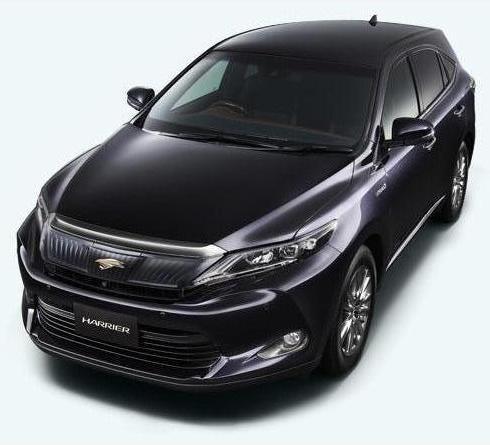







 In what is but the latest in a streak of prematurely leaked Toyota and Lexus press brochures and dealer training materials, what appears to be the latter for Lexus’ upcoming 2013 RX mid-term refresh was scanned and found its way from
In what is but the latest in a streak of prematurely leaked Toyota and Lexus press brochures and dealer training materials, what appears to be the latter for Lexus’ upcoming 2013 RX mid-term refresh was scanned and found its way from 